TECH TUESDAY: Is this RB16 aero detail the secret to Red Bull’s hot weather speed?

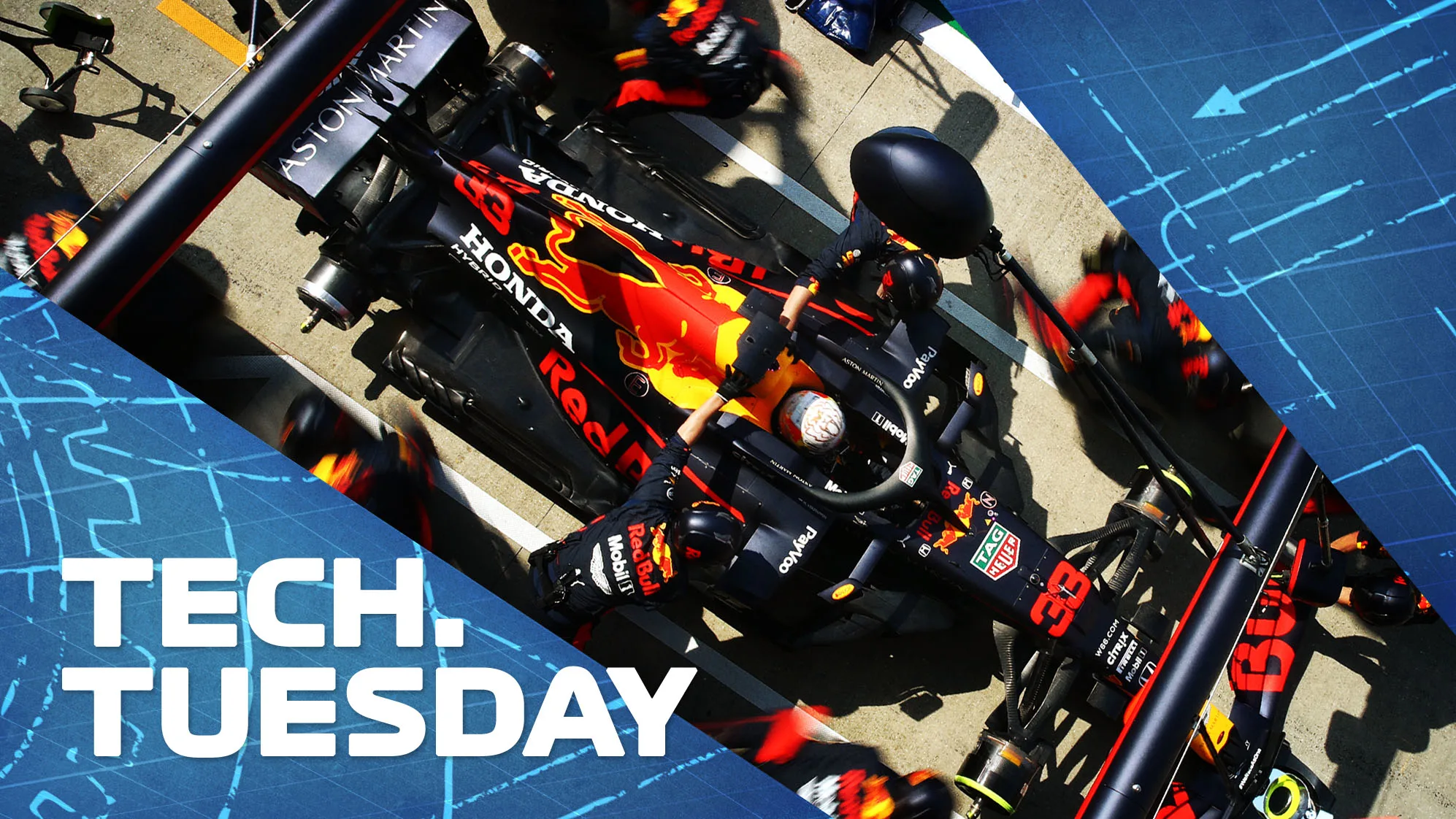
Although at Barcelona, Red Bull were unable to repeat their victory of a week earlier at Silverstone, Max Verstappen still manged to split the two Mercedes. In this week's Tech Tuesday, Mark Hughes examines how and why the team's RB16 car seems to be able to cope with hotter temperatures better than their rivals...
A pattern has emerged through the various practice sessions and races in 2020 that the Mercedes advantage over Red Bull is narrowed, and occasionally even overcome, when the temperatures are high. To a large extent this is driven by the different ways the two cars load the very temperature-sensitive tyres.
READ MORE: Could Verstappen have won in Spain had Red Bull repeated their Silverstone tyre gamble?
But differences in competitiveness between cars at different temperatures is often also driven by much the bodywork has to be opened up – and thereby how much aerodynamic damage is done – to retain adequate cooling.
We saw this very clearly in the last two events with the problems suffered by Carlos Sainz as his McLaren consistently ran hotter than that of team mate Lando Norris.
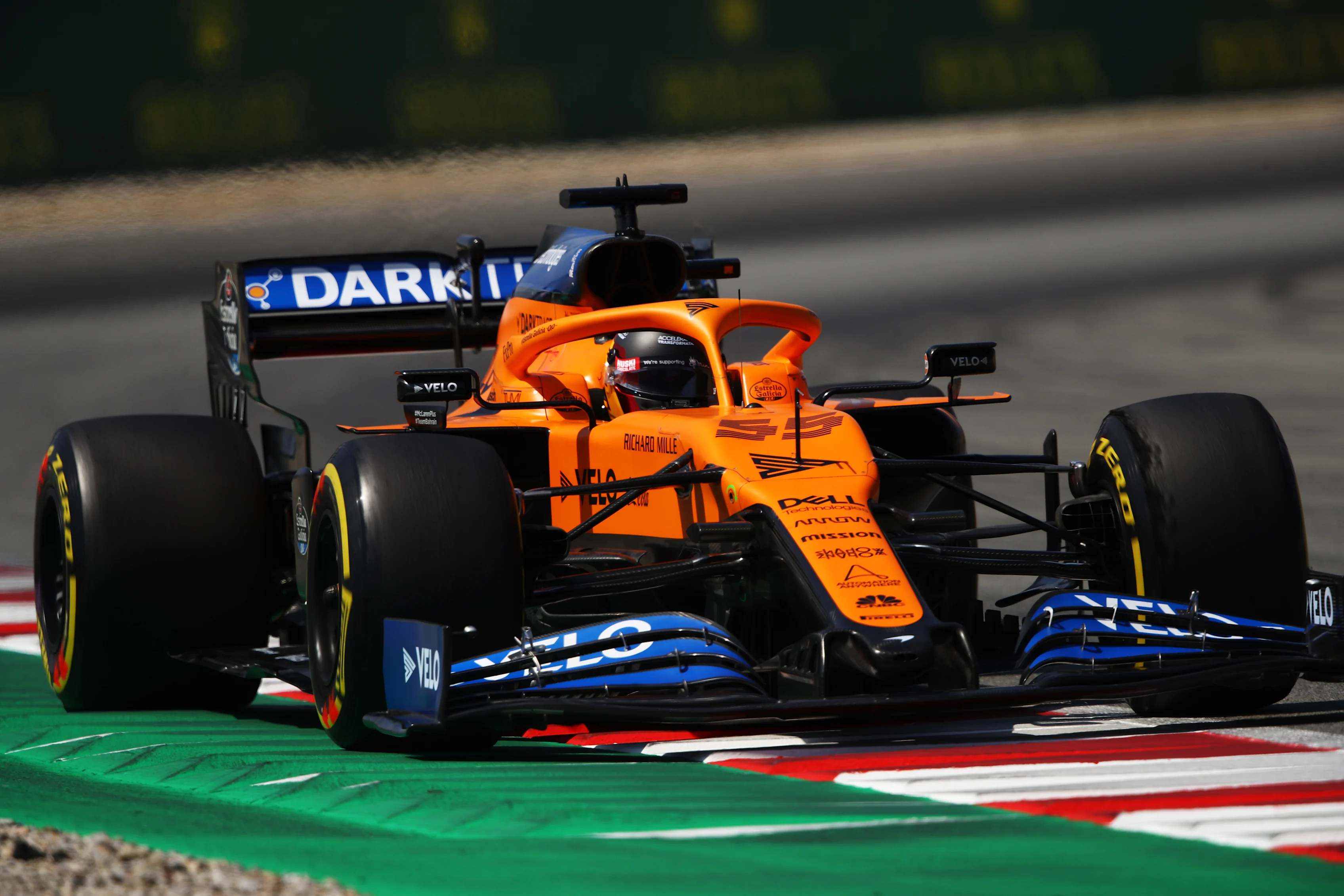
The rear bodywork had to be opened up at Silverstone to keep the car cooled and this accounted for a calculated 0.15s per lap loss of performance (around 8s over a race distance). In the even hotter ambient temperatures of Barcelona, the problem with Sainz’s car was still there during Friday practice.
An overnight change of power unit and turbo cured the problem, allowing Sainz’s performance to return, as he qualified and raced very strongly.
For Red Bull, a small, almost unnoticed detail of the RB16’s cooling package may be contributing to its excellent hot weather form.
The rear of the car is remarkably tightly-closed, considering the recent ambient temperatures it has run in. This may be partially explained by the hidden exit to the side and just behind the cockpit, as seen in the image below.
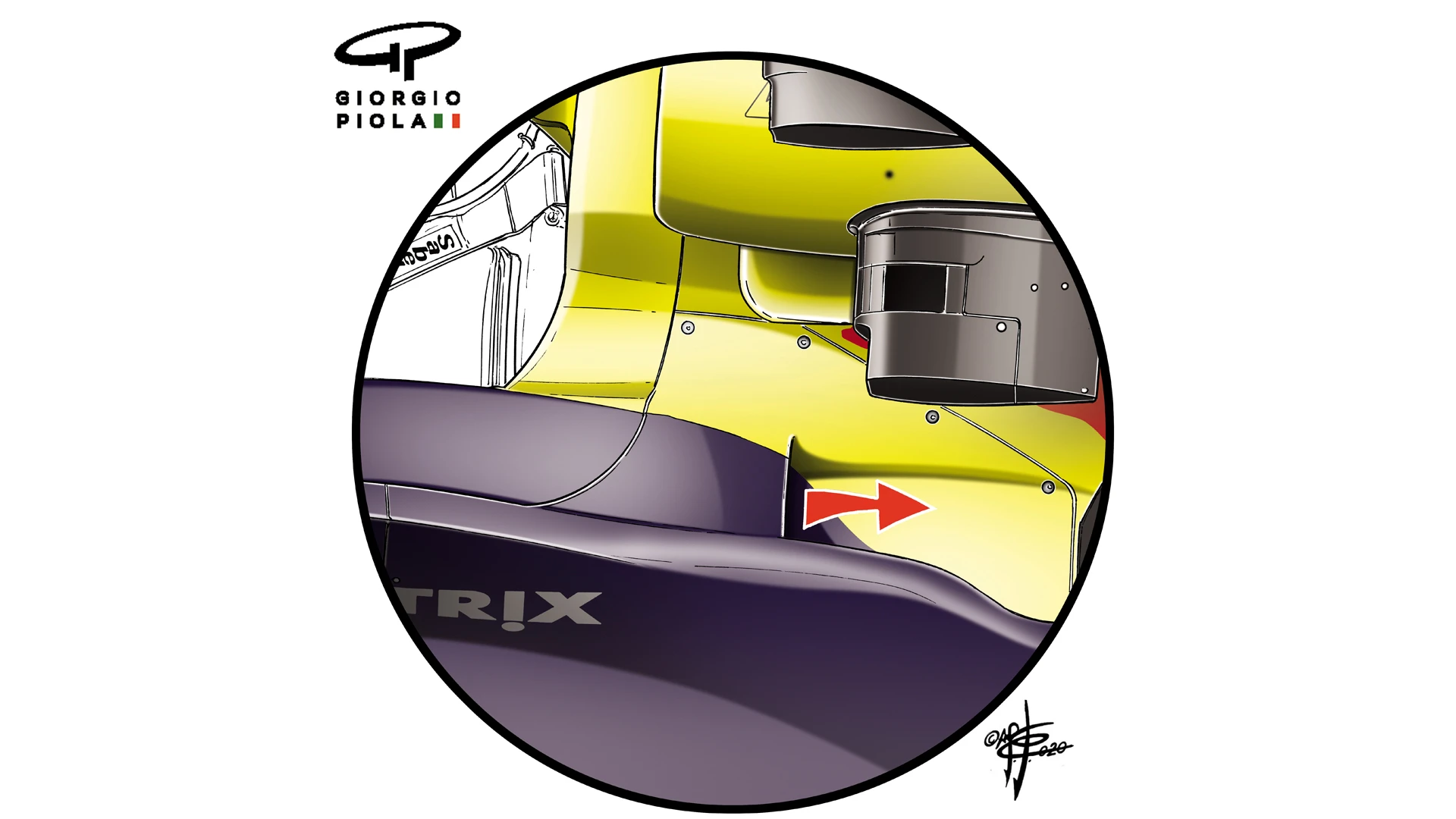
When viewed from the side and behind, it can be seen how the bodywork’s aero contouring partially hides the outlet (inlet shown by blue arrow, exit by red in the image below).
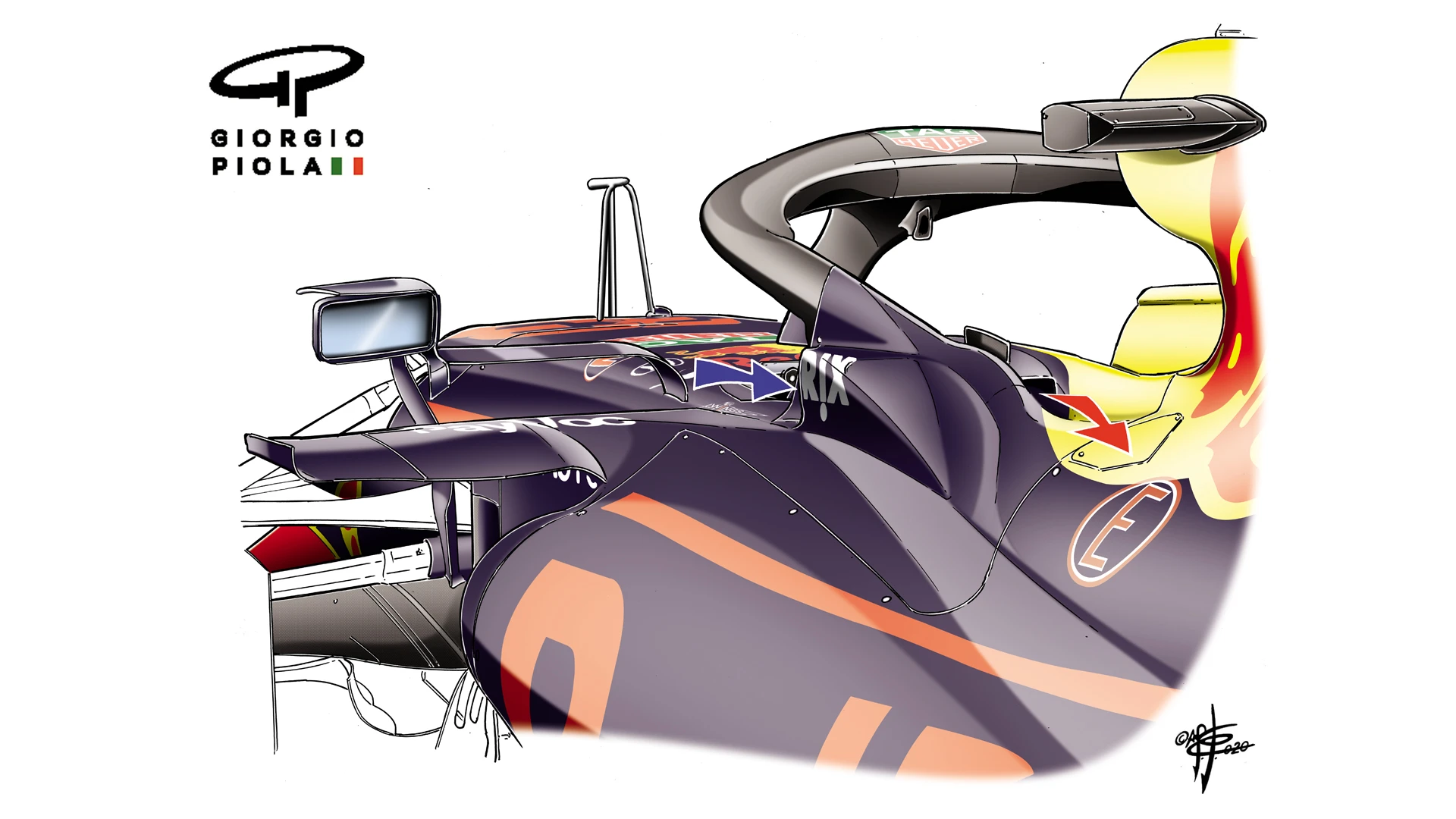
The cooling capacity is determined by the relationship of the inlet air mass and the outlet air speed. If this can be brought into its efficiency sweet spot, it can reduce the amount of bodywork opening necessary.
READ MORE: The Winners and Losers of the 2020 Spanish Grand Prix
Other recent developments of the Red Bull are not temperature-specific and include a slightly revised footplate for the front wing.
This was introduced at the British Grand Prix and is notably flatter and less-arched than the previous component, and features the horizontal finger at the back previously favoured by Ferrari and others as they try to tweak the car’s airflow, possibly to give a less extreme ramp-up in grip at the front as steering lock is applied.
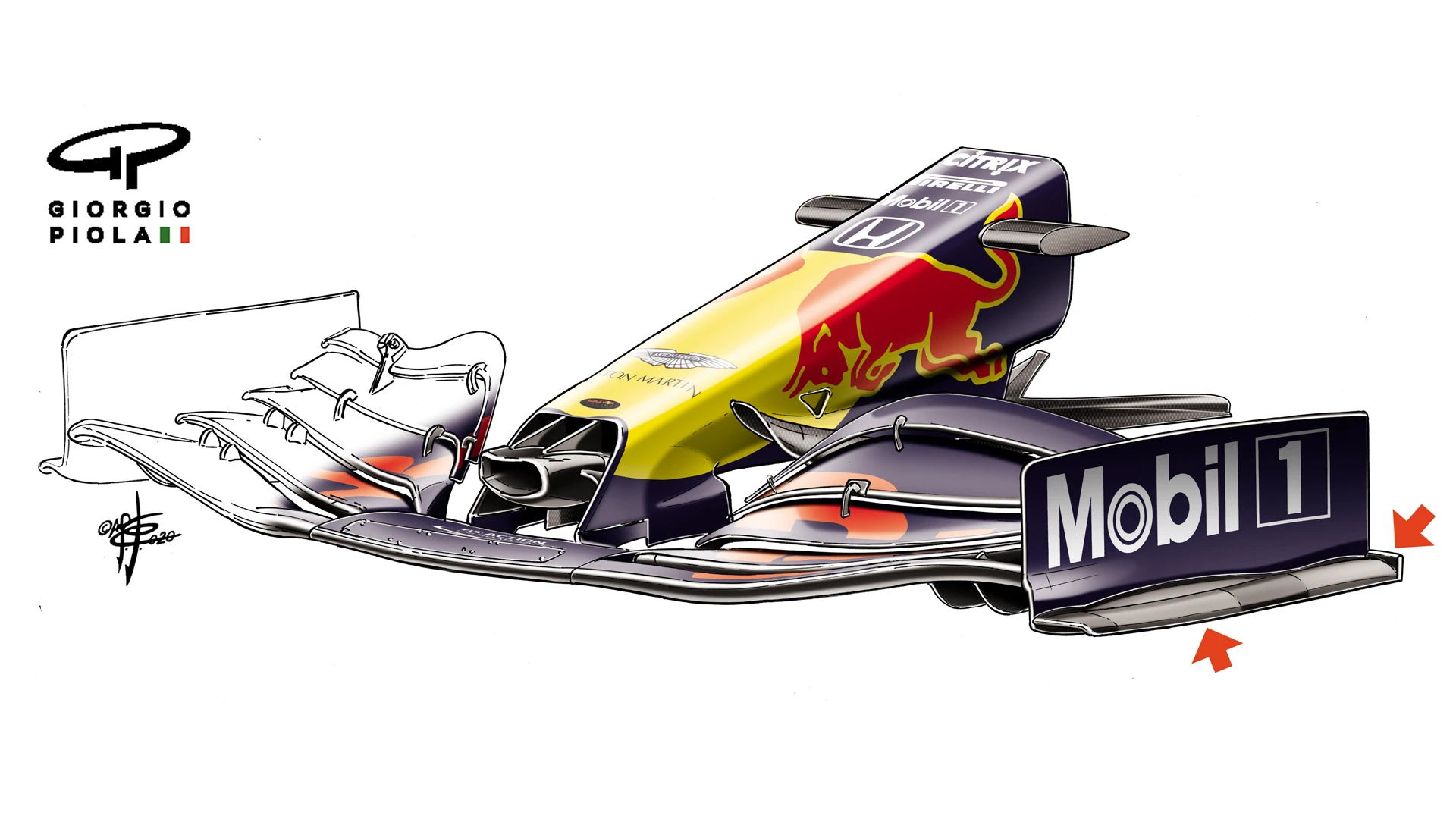
Next Up
Related Articles
 F1 CEO Domenicali reflects on 'phenomenal' 2025
F1 CEO Domenicali reflects on 'phenomenal' 2025 Piastri reveals lessons that will ‘only make me stronger’
Piastri reveals lessons that will ‘only make me stronger’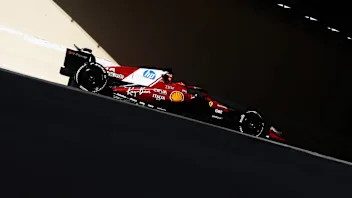 Ferrari confirm launch date for 2026 campaign
Ferrari confirm launch date for 2026 campaign Beyond The GridThe best of 2025, from Norris’ evolution to Brad Pitt’s ‘need for speed’
Beyond The GridThe best of 2025, from Norris’ evolution to Brad Pitt’s ‘need for speed’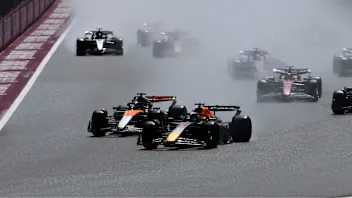 REVEALED: Your favourite race of the 2025 season
REVEALED: Your favourite race of the 2025 season Power RankingsWho did our judges rank as the best F1 driver of 2025?
Power RankingsWho did our judges rank as the best F1 driver of 2025?